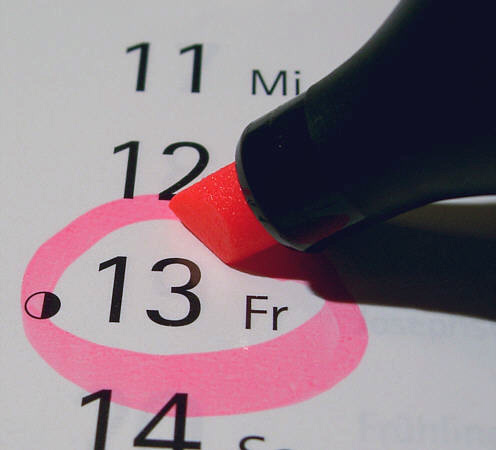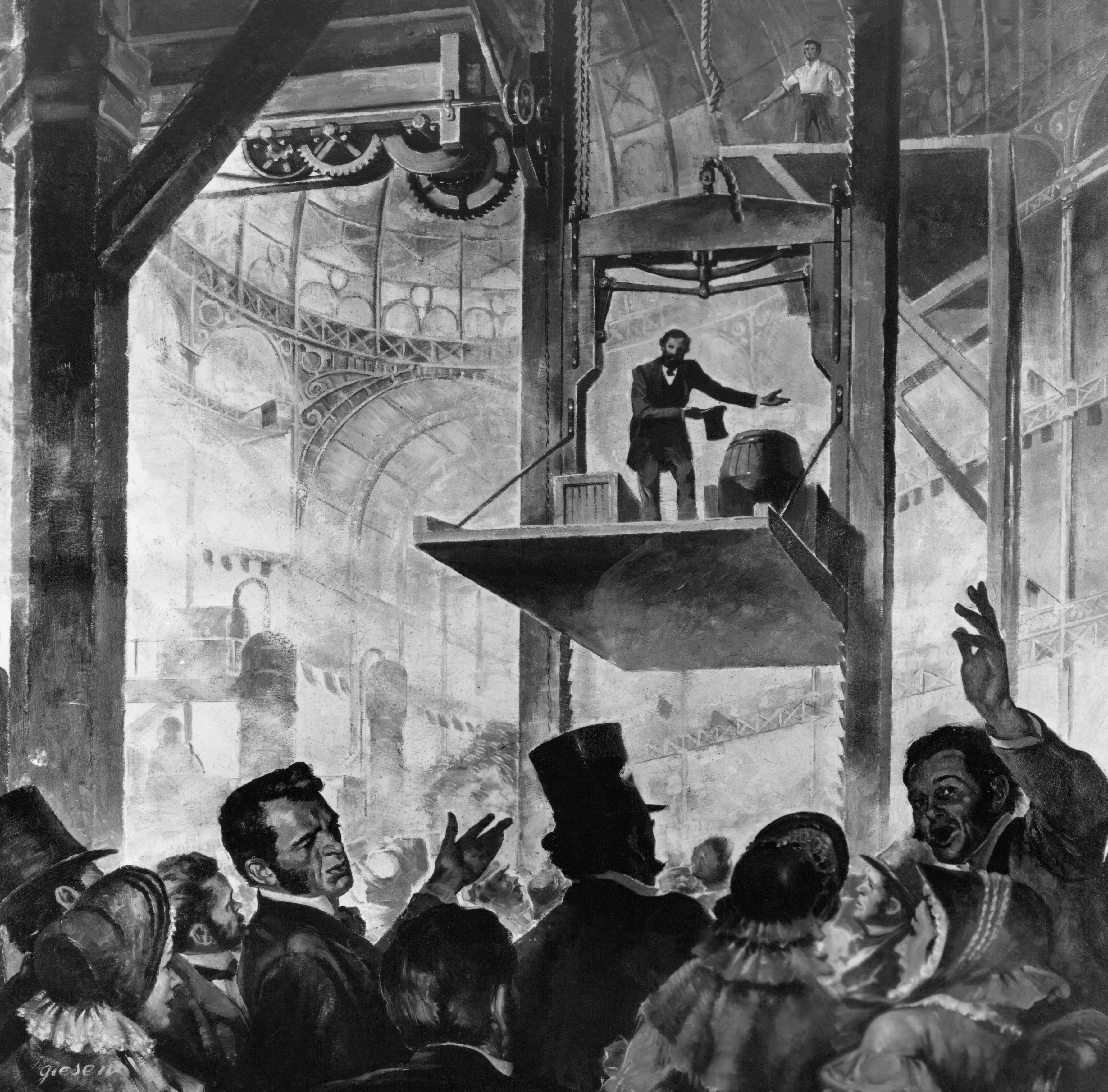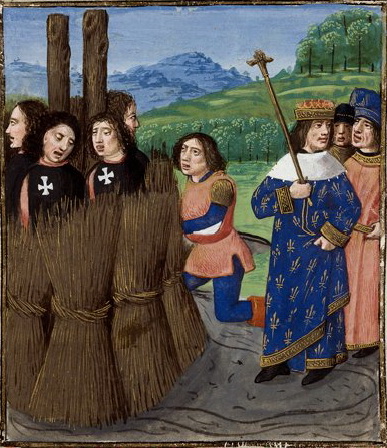|
Triskaidekaphobia
Triskaidekaphobia ( , ; ) is fear or avoidance of the number . It is also a reason for the fear of Friday the 13th, called ''paraskevidekatriaphobia'' () or ''friggatriskaidekaphobia'' ( and ). The term was used as early as in 1910 by Isador Coriat in ''Abnormal Psychology''. Origins The supposed unlucky nature of the number 13 has several theories of origin. Although several authors claim it is an older belief, no such evidence has been documented so far. In fact, the earliest attestation of 13 being unlucky is first found after the Middle Ages in Europe. Playing cards Tarot card games have been attested since at least around 1450 with the Visconti-Sforza Tarot. One of the trump cards in tarot represents Death, and is numbered 13 in several variants. In 1781, Antoine Court de Gébelin writes of this card's presence in the Tarot of Marseilles that the number thirteen was ''"toujours regarde comme malheureux"'' ("always considered as unlucky"). In 1784, Johann Gottlob ... [...More Info...] [...Related Items...] OR: [Wikipedia] [Google] [Baidu] |
Friday The 13th
Friday the 13th is considered an unlucky day in Western superstition. It occurs when the 13th day of the month in the Gregorian calendar falls on a Friday, which happens at least once every year but can occur up to three times in the same year. Common years that begin on Thursday have three Friday the 13ths in February, March, and November, such as 2009, 2015, and 2026. Leap years that begin on Sunday (i.e. that follow Dominical Letter AG) such as 2012 and 2040, also have three Friday the 13ths in January, April, and July. The years 2001, 2002, 2004, 2006, 2007, 2013, 2017, 2018, 2019, 2020, 2023 and 2024 had two Friday the 13ths, as will 2029; 2003, 2005, 2008, 2010, 2011, 2014, 2016, 2021, 2022 and 2025 had only one Friday the 13th, as will 2027 and 2028. For a month to have a Friday the 13th, the first day of the month must begin on a Sunday. History Unluckiness of 13 One source mentioned for the unlucky reputation of the number 13 is a Norse myth about twelve gods ... [...More Info...] [...Related Items...] OR: [Wikipedia] [Google] [Baidu] |
The Thirteen Club
The Thirteen Club (13 Club) is a secret society at the College of William & Mary, founded in 1890, and noted for its philanthropic practices. Little information has been made public regarding their campus activities. In fact, the society maintains such a high level of secrecy that even members' wives and children are unaware of their membership. Such was the case of Louise Kale, Director of William and Mary's Historic Campus, who only became aware of her father's membership after his death. By 1887, the Thirteen Club was 400-strong, over time gaining five U.S. Presidents as honorary members: Chester Arthur, Grover Cleveland, Benjamin Harrison, William McKinley and Theodore Roosevelt. In recent years, they have allowed for outside communication through their campaign "Be Here Now." In New York at the December 13, 1886 meeting of the Thirteen Club, Robert G. Ingersoll ended his toast, "The Superstitions of Public Men": Although there are a number of other secret societies with ... [...More Info...] [...Related Items...] OR: [Wikipedia] [Google] [Baidu] |
Elevator Panel With No 13 (cropped)
An elevator (American English) or lift (English in the Commonwealth of Nations, Commonwealth English) is a machine that vertically transports people or freight between levels. They are typically powered by electric motors that drive traction cables and counterweight systems such as a Hoist (device), hoist, although some pump hydraulic fluid to raise a cylindrical piston like a Hydraulic jack, jack. Elevators are used in agriculture and manufacturing to lift materials. There are various types, like chain and bucket elevators, grain augers, and hay elevators. Modern buildings often have elevators to ensure accessibility, especially where Inclined plane, ramps aren't feasible. High-speed elevators are common in skyscrapers. Some elevators can even move horizontally. History Pre-industrial era The earliest known reference to an elevator is in the works of the Roman architect Vitruvius, who reported that Archimedes ( – ) built his first elevator probably in 236 BC. Sources ... [...More Info...] [...Related Items...] OR: [Wikipedia] [Google] [Baidu] |
Chester A
Chester is a cathedral city in Cheshire, England, on the River Dee, Wales, River Dee, close to the England–Wales border. With a built-up area population of 92,760 in 2021, it is the most populous settlement in the borough of Cheshire West and Chester. It is also the historic county town of Cheshire and the List of Cheshire settlements by population, second-largest settlement in Cheshire after Warrington. Chester was founded in 79 AD as a "Castra, castrum" or Roman Empire, Roman fort with the name Deva Victrix during the reign of Emperor Vespasian. One of the main army camps in Roman Britain, Deva later became a major civilian settlement. In 689, Æthelred of Mercia, King Æthelred of Mercia founded the Minster Church of West Mercia, which later became Chester's first cathedral, and the Angles (tribe), Angles extended and strengthened the walls to protect the city against the Danes (Germanic tribe), Danes. Chester was one of the last cities in England to Norman conquest of Eng ... [...More Info...] [...Related Items...] OR: [Wikipedia] [Google] [Baidu] |
The Da Vinci Code
''The Da Vinci Code'' is a 2003 mystery thriller novel by Dan Brown. It is “the best-selling American novel of all time.” Brown's second novel to include the character Robert Langdon—the first was his 2000 novel '' Angels & Demons''—''The Da Vinci Code'' follows symbologist Langdon and cryptologist Sophie Neveu after a murder in the Louvre Museum in Paris entangles them in a dispute between the Priory of Sion and Opus Dei over the possibility of Jesus and Mary Magdalene having had a child together. The novel explores an alternative religious history, whose central plot point is that the Merovingian kings of France were descended from the bloodline of Jesus Christ and Mary Magdalene, ideas derived from Clive Prince's '' The Templar Revelation'' (1997) and books by Margaret Starbird. The book also refers to '' The Holy Blood and the Holy Grail'' (1982), although Brown stated that it was not used as research material. ''The Da Vinci Code'' provoked a popular inter ... [...More Info...] [...Related Items...] OR: [Wikipedia] [Google] [Baidu] |
Philip IV Of France
Philip IV (April–June 1268 – 29 November 1314), called Philip the Fair (), was King of France from 1285 to 1314. Jure uxoris, By virtue of his marriage with Joan I of Navarre, he was also King of Navarre and Count of Champagne as Philip I from 1284 to 1305. Although Philip was known to be handsome, hence the epithet ''le Bel'', his rigid, autocratic, imposing, and inflexible personality gained him (from friend and foe alike) other nicknames, such as the Iron King (). His fierce opponent Bernard Saisset, Roman Catholic Diocese of Pamiers, bishop of Pamiers, said of him: "He is neither man nor beast. He is a statue." Philip, seeking to reduce the wealth and power of the nobility and clergy, relied instead on skilful civil servants, such as Guillaume de Nogaret and Enguerrand de Marigny, to govern Kingdom of France, the kingdom. The king, who sought an uncontested monarchy, compelled his vassals by wars and restricted their feudal privileges, paving the way for the tran ... [...More Info...] [...Related Items...] OR: [Wikipedia] [Google] [Baidu] |
Knights Templar
The Poor Fellow-Soldiers of Christ and of the Temple of Solomon, mainly known as the Knights Templar, was a Military order (religious society), military order of the Catholic Church, Catholic faith, and one of the most important military orders in Western Christianity. They were founded in 1118 to defend pilgrims on their way to Jerusalem, with their headquarters located there on the Temple Mount, and existed for nearly two centuries during the Middle Ages. Officially endorsed by the Catholic Church by such decrees as the papal bull ''Omne datum optimum'' of Pope Innocent II, the Templars became a favoured charity throughout Christendom and grew rapidly in membership and power. The Templar knights, in their distinctive white mantle (monastic vesture), mantles with a red Christian cross, cross, were among the most skilled fighting units of the Crusades. They were prominent in Christian finance; non-combatant members of the order, who made up as much as 90% of their members, ma ... [...More Info...] [...Related Items...] OR: [Wikipedia] [Google] [Baidu] |
Lane Cove West Apartments Lift Shaft
In road transport, a lane is part of a roadway that is designated to be used by a single line of vehicles to control and guide drivers and reduce traffic conflicts. Most public roads (highways) have at least two lanes, one for traffic in each direction, separated by lane markings. On multilane roadways and busier two-lane roads, lanes are designated with road surface markings. Major highways often have two multi-lane roadways separated by a median. Some roads and bridges that carry very low volumes of traffic are less than wide, and are only a single lane wide. Vehicles travelling in opposite directions must slow or stop to pass each other. In rural areas, these are often called country lanes. In urban areas, alleys are often only one lane wide. Urban and suburban one lane roads are often designated for one-way traffic. History For much of human history, roads did not need lane markings because most people walked or rode horses at relatively slow speeds. However, when aut ... [...More Info...] [...Related Items...] OR: [Wikipedia] [Google] [Baidu] |
Snorri Sturluson
Snorri Sturluson ( ; ; 1179 – 22 September 1241) was an Icelandic historian, poet, and politician. He was elected twice as lawspeaker of the Icelandic parliament, the Althing. He is commonly thought to have authored or compiled portions of the ''Prose Edda'', which is a major source for what is today known about Norse mythology and alliterative verse, and , a history of the Norsemen, Norse kings that begins with legendary material in ''Ynglinga saga'' and moves through to early medieval History of Scandinavia, Scandinavian history. For stylistic and methodological reasons, Snorri is often taken to be the author of ''Egil's Saga''. He was assassinated in 1241 by men claiming to be agents of the King of Norway. Biography Early life Snorri Sturluson was born in (commonly transliterated as Hvamm or Hvammr) as a member of the wealthy and powerful Sturlungar family clan, Sturlungar clan of the Icelandic Commonwealth, in AD 1179. His parents were Sturla Þórðarson the Elder o ... [...More Info...] [...Related Items...] OR: [Wikipedia] [Google] [Baidu] |
Prose Edda
The ''Prose Edda'', also known as the ''Younger Edda'', ''Snorri's Edda'' () or, historically, simply as ''Edda'', is an Old Norse textbook written in Iceland during the early 13th century. The work is often considered to have been to some extent written, or at least compiled, by the Icelandic scholar, lawspeaker, and historian Snorri Sturluson 1220. It is considered the fullest and most detailed source for modern knowledge of Norse mythology, the body of myths of the North Germanic peoples, and draws from a wide variety of sources, including versions of poems that survive into today in a collection known as the ''Poetic Edda''. The ''Prose Edda'' consists of four sections: The Prologue (Prose Edda), Prologue, a euhemerism, euhemerized account of the Norse gods; ''Gylfaginning'', which provides a question and answer format that details aspects of Norse mythology (consisting of approximately 20,000 words), ''Skáldskaparmál'', which continues this format before providing lists o ... [...More Info...] [...Related Items...] OR: [Wikipedia] [Google] [Baidu] |
Balder
Baldr (Old Norse also Balder, Baldur) is a god in Germanic mythology. In Norse mythology, he is a son of the god Odin and the goddess Frigg, and has numerous brothers, such as Thor and Váli. In wider Germanic mythology, the god was known in Old English as , and in Old High German as , all ultimately stemming from the Proto-Germanic theonym ('hero' or 'prince'). During the 12th century, Danish accounts by Saxo Grammaticus and other Danish Latin chroniclers recorded a euhemerized account of his story. Compiled in Iceland during the 13th century, but based on older Old Norse poetry, the ''Poetic Edda'' and the ''Prose Edda'' contain numerous references to the death of Baldr as both a great tragedy to the Æsir and a harbinger of Ragnarök. According to ''Gylfaginning'', a book of Snorri Sturluson's Prose Edda, Baldr's wife is Nanna and their son is Forseti. Baldr had the greatest ship ever built, ''Hringhorni'', and there is no place more beautiful than his hall, Breidablik. ... [...More Info...] [...Related Items...] OR: [Wikipedia] [Google] [Baidu] |
Höðr
Höðr ( , Latin Hotherus; often anglicized as Hod, Hoder, or Hodur) is a god in Norse mythology. The blind son of Odin, he is tricked and guided by Loki into shooting a mistletoe arrow which was to slay the otherwise invulnerable Baldr. According to the ''Prose Edda'' and the ''Poetic Edda'', the goddess Frigg, Baldr's mother, made everything in existence swear never to harm Baldr, except for the mistletoe, which she found too unimportant to ask (alternatively, which she found too young to demand an oath from). The gods amused themselves by trying weapons on Baldr and seeing them fail to do any harm. Loki, the mischief-maker, upon finding out about Baldr's one weakness, made a spear from mistletoe, and helped Höðr shoot it at Baldr. In reaction to this, Odin and Rindr gave birth to Váli, who grew to adulthood within a day and slew Höðr. The Danish historian Saxo Grammaticus recorded an alternative version of this myth in his '' Gesta Danorum''. In this version, the mortal ... [...More Info...] [...Related Items...] OR: [Wikipedia] [Google] [Baidu] |







